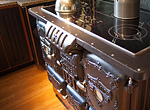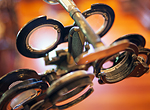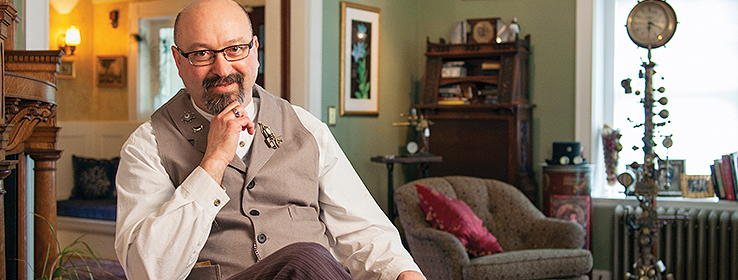Designer Bruce Rosenbaum puts a modern spin on Victoriana, reinventing gadgets and antiques into unique statements.
By Kim Palmer

Bruce Rosenbaum hadn’t even heard the term “steampunk” when he started renovating his family’s 1901 Victorian mansion in Sharon, Massachusetts. He just liked finding unusual antiques and repurposing them — converting a pump organ into a 21st-century work station, for instance. A hobby became an obsession, and Rosenbaum’s firm ModVic has since designed one-of-a-kind objects for a tattoo parlor, museums and restaurants. Last year, he assembled a Steampunk by Design team, which recently created a Jules Verne–meets–Sherlock Holmes “gentleman’s quarter” at the Boston Design Center.

STIR: Define “steampunk.”
BR: In terms of design, steampunk takes old objects that were once highly useful and gives them new life, so it seems as if they should have always been used that way. What appeared obsolete suddenly feels like living in the future.
STIR: You’ve compared steampunk to magic.
BR: Absolutely! I was actually a professional magician by the age of 12 or 13, mostly to get girls. It didn’t work. But early in my career, I worked for a catalog company selling personal products like stockings and bras. For my presentations, I’d start out with a trick. People would walk in and see a door frame in the middle of the room. I’d open the door, and there’d be nothing behind it. Then I’d close the door, open it again, and a model wearing a bra would be standing there. Your brain on steampunk operates the same way it does during a magic trick. I’m using misdirection — making you look in another direction to see something in a new way.
STIR: What colors were used for the steampunk space at the Boston Design Center?
BR: We like to call it a “dapper den.” I found an industrial clothes wringer that makes an incredible TV-DVD mount, and two cast-iron stable dividers. Metal-based steampunk objects look great against rich colors, so the interior designer for our Steampunk by Design team, Linda Hentschel of i-Design, used SW 6272 Plum Brown for the panel walls.
STIR: What other colors do you like for a steampunk look?
BR: My favorite color is in my steampunk office. It’s a warm coppery gold that grounds and gives life to all the copper, bronzes, brasses and dark walnut objects in the office. We started out with an Arts and Crafts green, but it made the space feel too cold with all of the metal objects in the room. It now feels like I’m totally surrounded in a cozy enclosed space — 20,000 leagues under the ocean.

BR: Actually, its impact is quite the opposite. The act of repurposing is therapeutic. There’s a very strong emotional component to taking an object and giving it new life. When I do workshops, honestly, people get teary. Because what I’m trying to do is give them a meaningful connection to their past. Steampunk is about telling a story.
STIR: How can steampunk inspire more-traditional designers?
BR: Any successful design requires getting to know your client. Encourage them to look into their own past and family. Find an object with real significance, and do something creative with it. You’ll end up creating a genuinely meaningful space for people to live, work and play.
STIR: What’s your steampunk inspiration?
BR: My dad had to have the latest anything in technology: the latest camera, the latest gadget. So steampunk reminds me of my father. And it allows me to keep performing magic.













